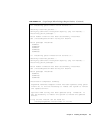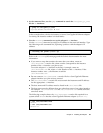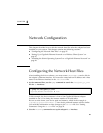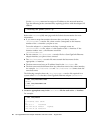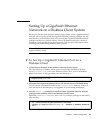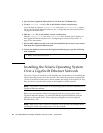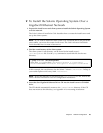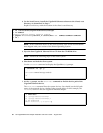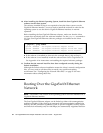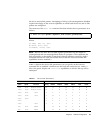
26 Sun GigaSwift Ethernet Adapter Installation and User’s Guide • August 2004
Use the ifconfig command to assign an IP address to the network interface.
Type the following at the command line, replacing ip-address with the adapter’sIP
address:
Refer to the ifconfig(1M) man page and the Solaris documentation for more
information.
■ If you want a setup that remains the same after you reboot, create an
/etc/hostname.cenumber file, where number corresponds to the instance
number of the ce interface you plan to use.
To use the adapter’s ce interface in the Step 1 example, create an
/etc/hostname.ce0 file, where 0 is the number of the ce interface. If the
instance number were 1, the filename would be
/etc/hostname.ce1.
■ Do not create an /etc/hostname.cenumber file for a Sun GigaSwift Ethernet
adapter interface you plan to leave unused.
■ The /etc/hostname.cenumber file must contain the host name for the
appropriate ce interface.
■ The host name must have an IP address listed in the /etc/hosts file.
■ The host name must be different from any other host name of any other interface,
for example: /etc/hostname.ce0 and /etc/hostname.ce1 cannot share the
same host name.
The following example shows the /etc/hostname.cenumber file required for a
system called zardoz that has a Sun GigaSwift Ethernet adapter (zardoz-11).
3. Create an appropriate entry in the /etc/hosts file for each active ce interface.
For example:
# ifconfig ce0 plumb ip-address up
# cat /etc/hostname.hme0
zardoz
# cat /etc/hostname.ce0
zardoz-11
# cat /etc/hosts
#
# Internet host table
#
127.0.0.1 localhost
129.144.10.57 zardoz loghost
129.144.11.83 zardoz-11




